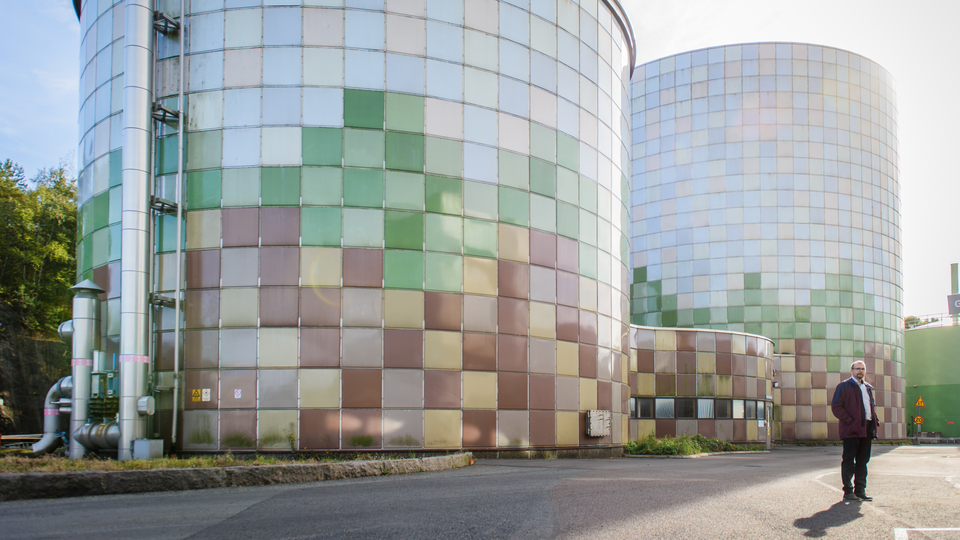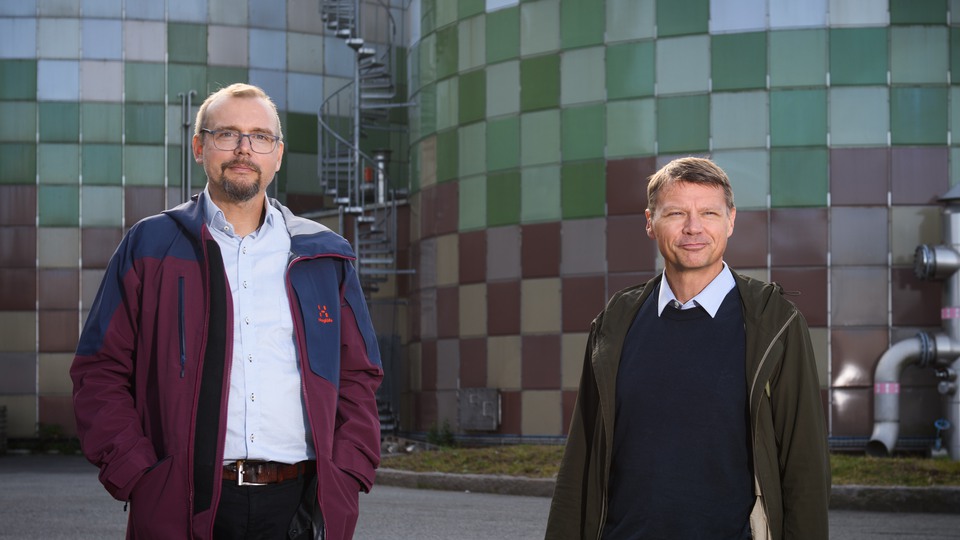
Biogas is more than energy
Inside the three green-brown digesters at the Gryaab wastewater treatment plant in Gothenburg, it is warm, brown and bubbly. Sludge from wastewater and fat from restaurants and other large-scale kitchens are blended, fermenting for a few weeks. Out comes biogas, certified fertilizer and maximized environmental benefits.
In one year, the facility produces 11 million cubic metres of biogas, the equivalent of 70 GWh. And every week, 500 tonnes of certified fertilizer arises as a by-product; this can replace artificial fertilizer.
It's a simple technology that combines multiple environmental benefits, but we only use less than a third of the full potential of waste and residual products in Sweden, not to mention globally
, says Anders Hjort, biogas expert at IVL Swedish Environmental Research Institute.
From by-product to energy source
Many of the anaerobic digestion facilities at the treatment plants in Sweden were built in the 1960s and 1970s. Back then, biogas was only a by-product of the wastewater treatment process. Not until the 1990s was biogas used as an energy source, when it started to be upgraded to biomethane, explains Anders Hjort.
Since then, interest has grown and fallen, but in the past two or three years, attitudes towards biogas have changed, and now it is an important part of the energy mix, even at the EU level. As recently as last spring, the EU Commission decided that an additional 35 billion cubic metres of biomethane is to be produced every year within the framework of the REPowerEU initiative.
Today, most biogas production takes place in Europe, China and North America, but interest is on the rise, especially in times of crisis. Since Russia's invasion of Ukraine, and the import stop on Russian natural gas, biogas has become even more important.
The war has definitely redrawn the energy map. Every time there's an energy crisis, biogas returns to the agenda. This time it coincides with both the climate change issue and the security situation
, says Anders Hjort.
New markets for liquid biogas, LBG
To date, the largest biogas market in Sweden has been for bus traffic, but as more and more cities are electrifying their public transport, biogas must find new markets. Heavy trucks, long-distance buses, some industrial processes and shipping are the hottest candidates.
It's important that biogas goes to the markets where it delivers the most benefit, where is difficult to replace fossil fuels with, for instance, electricity
, says Anders Hjort.
But to maximize the benefit of biogas, it must often be converted to liquid form, i.e. liquid biogas or LBG. Liquid biogas can easily replace or be mixed with liquid natural gas, LNG, which has become an increasingly common fuel for ships instead of conventional bunker oil, because it reduces emissions of carbon dioxide and sulphur.
It is expected that within a couple of years, 15% of all bunker fuel used in Sweden and the world will be LNG.
If instead we can offer LBG, this would be a significant contribution to the transition of the shipping sector
, says Karl Jivén, shipping fuels expert.

It is definitely possible to produce the volumes of liquid biomethane that shipping needs, but this requires a considerable increase in the number of biogas facility is in Sweden, according to Anders Hjort and Karl Jivén.
Lots of environmental benefits for the money invested
The biggest obstacles to rapid transition are, of course, economic. LBG is still many times more expensive than oil. There is an urgent need for instruments and business models that reduce costs for LBG.
Over the years, investment support such as that provided through Klimatklivet have been crucial to Swedish biogas production. Since 2015, IVL's biogas experts have helped both large and small clients with applying for investment support to a value of approximately SEK 500 million. Anders Hjort estimates conservatively that, in terms of environmental benefits, this has reduced emissions by 500,000 tonnes of carbon dioxide equivalents.
Investments in biogas have a very high environmental benefit per invested dollar. Plus, producing fossil natural gas takes several million years, whereas renewable biogas takes just three weeks.
